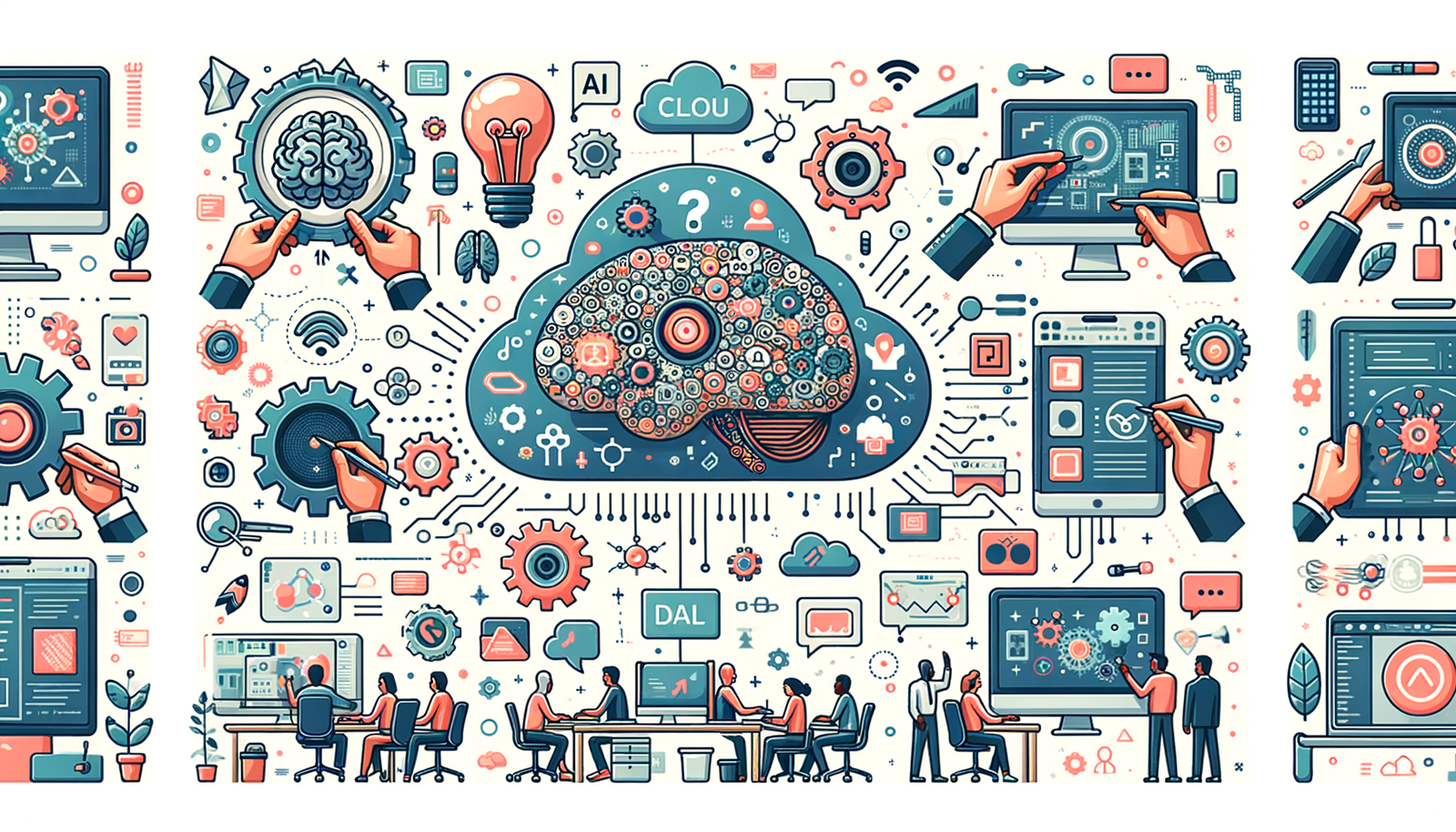Your Cart is Empty
Customer Testimonials
-
"Great customer service. The folks at Novedge were super helpful in navigating a somewhat complicated order including software upgrades and serial numbers in various stages of inactivity. They were friendly and helpful throughout the process.."
Ruben Ruckmark
"Quick & very helpful. We have been using Novedge for years and are very happy with their quick service when we need to make a purchase and excellent support resolving any issues."
Will Woodson
"Scott is the best. He reminds me about subscriptions dates, guides me in the correct direction for updates. He always responds promptly to me. He is literally the reason I continue to work with Novedge and will do so in the future."
Edward Mchugh
"Calvin Lok is “the man”. After my purchase of Sketchup 2021, he called me and provided step-by-step instructions to ease me through difficulties I was having with the setup of my new software."
Mike Borzage
Design Software History: Future of Design Software: AI, Cloud Collaboration, and Emerging Trends
October 16, 2024 5 min read


The landscape of design software today is in a state of rapid evolution, shaped by technological advancements and shifting user expectations. Traditional tools are being transformed by innovative technologies that enhance capabilities and streamline workflows. Artificial intelligence (AI) and machine learning are becoming integral components of modern design platforms, automating repetitive tasks and providing intelligent suggestions that augment human creativity. Simultaneously, the rise of cloud-based collaboration software is fostering unprecedented levels of connectivity and cooperation among designers worldwide. Understanding these current trends is essential for professionals aiming to stay competitive and for organizations seeking to leverage cutting-edge tools. By examining the innovations at play and anticipating future developments, stakeholders can position themselves strategically in an ever-changing environment. This article delves into the significant advancements reshaping design software and explores the trends that are set to define the future of design processes.
Current Innovations in Design Software
The design industry is experiencing a transformative shift as emerging technologies redefine the tools and methods used by professionals. Central to this change is the integration of artificial intelligence and machine learning into design software. These technologies enable programs to learn from data inputs, recognize patterns, and make informed suggestions, thereby enhancing efficiency and creativity. Designers now have access to features like generative design, where algorithms explore multiple design permutations based on specified parameters, providing options that might not have been conceived manually. This not only accelerates the ideation phase but also introduces innovative solutions that optimize performance and resource utilization.
In addition to AI advancements, the rise of cloud-based collaboration software is revolutionizing how design teams operate. Cloud platforms allow for real-time collaboration, enabling multiple users to work on the same project simultaneously from different locations. This accessibility breaks down geographical barriers, facilitating global cooperation and accelerating project timelines. Cloud solutions also offer scalability, easy updates, and integration with other tools, making them a versatile choice for modern design environments. The ubiquitous nature of cloud services ensures that designers can access their work anytime, anywhere, leading to greater flexibility and responsiveness to project demands.
These innovations are collectively pushing the boundaries of what is possible in design software. AI and machine learning are not just tools but collaborative partners that enhance human capabilities. Cloud-based platforms are transforming solitary workflows into dynamic, interactive processes. Together, they are setting new standards for efficiency, creativity, and collaboration in the design industry.
Trends Shaping the Future of Design Processes
The future of design processes is being shaped by several key trends that reflect broader societal and technological shifts. One such trend is the influence of remote work and global collaboration. With the increasing acceptance of remote work models, design teams are no longer confined to a single physical location. Remote access tools and virtual collaboration platforms have become essential, enabling designers to connect and contribute from anywhere in the world. This dispersal of talent allows for more diverse perspectives and fosters innovation but also requires robust tools to manage communication and workflow effectively.
Another significant trend is the emphasis on sustainability and green technologies within design practices. Environmental concerns are prompting designers to consider the ecological impact of their work more seriously. As a result, there is a growing demand for design software that can assist in creating sustainable solutions. Tools that offer lifecycle analysis, energy consumption modeling, and material impact assessments are becoming increasingly important. By integrating these features, software helps designers make informed decisions that align with environmental goals and regulatory requirements.
Furthermore, the growth of low-code/no-code platforms is democratizing access to design software. These platforms enable users without extensive programming knowledge to create complex designs and applications through intuitive interfaces and pre-built components. This accessibility is expanding the pool of individuals who can participate in the design process, fostering a more inclusive environment that encourages innovation from diverse contributors. The ease of use offered by low-code/no-code solutions reduces barriers to entry and allows organizations to leverage internal talent more effectively.
- Remote access tools are essential for modern, dispersed design teams.
- Sustainable design practices are becoming integral due to environmental concerns.
- Low-code/no-code platforms are making design software accessible to non-technical users.
Predictions for the Next Decade
Anticipating the future, several predictions emerge about how design software will evolve over the next decade. One of the most exciting prospects is the advancement of virtual and augmented reality (VR/AR) design tools. These technologies promise to transform the way designers visualize and interact with their creations. By immersing designers in a virtual environment, VR/AR tools provide a more intuitive understanding of spatial relationships, scale, and user experience. This immersive approach can enhance collaboration, allowing stakeholders to experience designs firsthand and provide immediate feedback, thus streamlining the iteration process.
Another critical aspect shaping future software development is the increasing importance of ethical considerations and user-centric design. As software becomes more powerful and pervasive, designers have a responsibility to consider the broader impact of their work. This includes addressing issues like data privacy, accessibility for users with disabilities, and the societal implications of design choices. Future design software is expected to offer features that assist in evaluating ethical considerations, ensuring that products are developed with a focus on fairness, inclusivity, and user well-being.
Additionally, there is an expectation of significant advancements in design automation and smarter assistive technologies. The continued evolution of AI will likely lead to software that can handle increasingly complex tasks, from automating routine processes to providing predictive design suggestions based on vast datasets. These assistive technologies will enable designers to work more efficiently, reduce errors, and focus on creative problem-solving. The integration of such intelligent systems will empower designers to produce higher-quality work while managing growing demands and tighter deadlines.
- VR/AR tools will revolutionize visualization and user interaction.
- Ethical and user-centric design will be central to software development.
- Advanced automation will enhance efficiency and creativity in design processes.
Conclusion
The current innovations in design software are laying the groundwork for a future where technology and creativity are more interconnected than ever before. The integration of AI and machine learning is enhancing capabilities and redefining what is possible within design tools. Cloud-based collaboration is breaking down barriers, enabling global teams to work together seamlessly. Trends such as the rise of remote work, a focus on sustainability, and the democratization of design through low-code/no-code platforms are reshaping how designers approach their craft.
Predictions for the next decade indicate a continued trajectory toward immersive technologies like VR/AR, an increased emphasis on ethical considerations, and the proliferation of intelligent automation. These developments underscore the importance of adaptability within the design community. As technological changes occur at an accelerating pace, designers and developers must remain agile, continually updating their skills and embracing new tools. By engaging proactively with emerging trends, professionals can not only keep pace with the industry but also contribute to shaping a landscape that values innovation, responsibility, and creativity. The future of design software holds immense potential, and those who are prepared to navigate its complexities will be at the forefront of this exciting evolution.
Also in Design News
Subscribe
Sign up to get the latest on sales, new releases and more …





